In 2016 I took a cue from commercial tomato growers and started to stake my tomatoes with a string trellis. I was immediately won over by how cheap, easy and EFFECTIVE this method is for supporting a tomato plant.
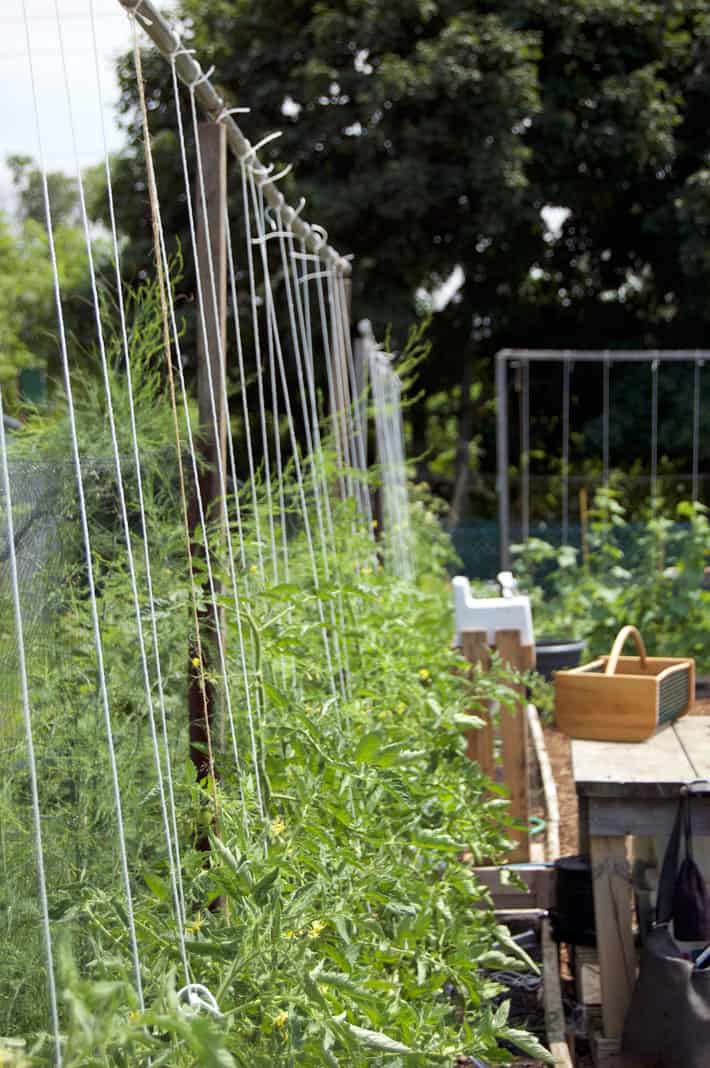
There has to be a better way. There's always a better way. I say that little mantra with pretty much everything I do including growing tomatoes.
I've done cages, stakes, espaliering and the Florida Weave (which works well but still results in a big MESS of tomato plants.)
By the way, the post that talks about how to execute a Florida Weave is actually a post on how to identify and pinch off tomato suckers, so if you don't know how to do that read the post.
My search for the perfect way to support tomatoes ended when I discovered and tried the string method. It didn't even have a name back then. I called it string training.
Now it's referred to as a string trellis.
Table of Contents
QUICK GUIDE
- Create a support structure.
- Tie a string to the top of the structure.
- Pin the string to the ground with a garden staple.
- Plant tomato and wind the stem up the string.
- Continue to wind as the tomato gets taller.
That's it. You can leave the structure and strings in place year after year so you only need to do this once.
I can hear you now.
WHAT ABOUT CROP ROTATION???
For the most part I *do not* rotate my crops because I don't believe in it for a home garden. As long as you fertilize/add compost to your soil every year there will be no soil depletion. And moving your crops 20 feet to the left or right isn't going to confuse or deter any of the pests/disease you have.
How-to Video
String training is a method that up until recently was normally only seen in commercial greenhouses or the back fields of very astute hippie homesteaders.
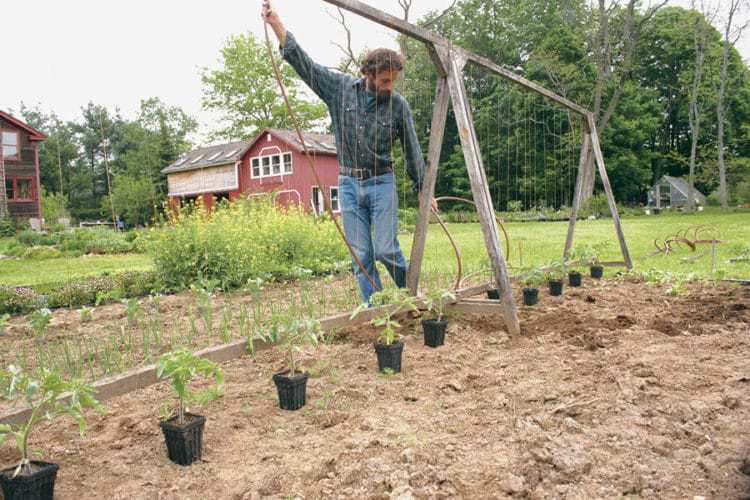
I don't know this guy. This guy is just stringing up his tomatoes. Never met him. Good photo though.
Not only can you use this method for tomatoes, but you can use it for anything that has a stem you can wind upwards.
USE A STRING TRELLIS FOR GROWING CUCUMBERS
Here we go.
How to String Trellis Tomatoes
- Hammer T-posts into the ground 8' apart (or less). For added height, screw an 8' 2x2 into the side of each T-post. Add support across the top.
Screwing another 2x2 into the tops of your posts works well for a support bar, as does an old curtain rod. You just need something sturdy to hang a string from.
TIP: Before screwing your 2x2s into the T-Posts, drill a 3" deep hole into the top of the 2x2s. Wind a coat-hanger-type wire around your rod a couple of times making sure to leave 3" of the ends straight. Slip the looped wire off the rod and stick it into the top of the 2x2. Now you'll be able to slip the rods through the wires to hold them in place. You can see the visual demonstration of this in the video.
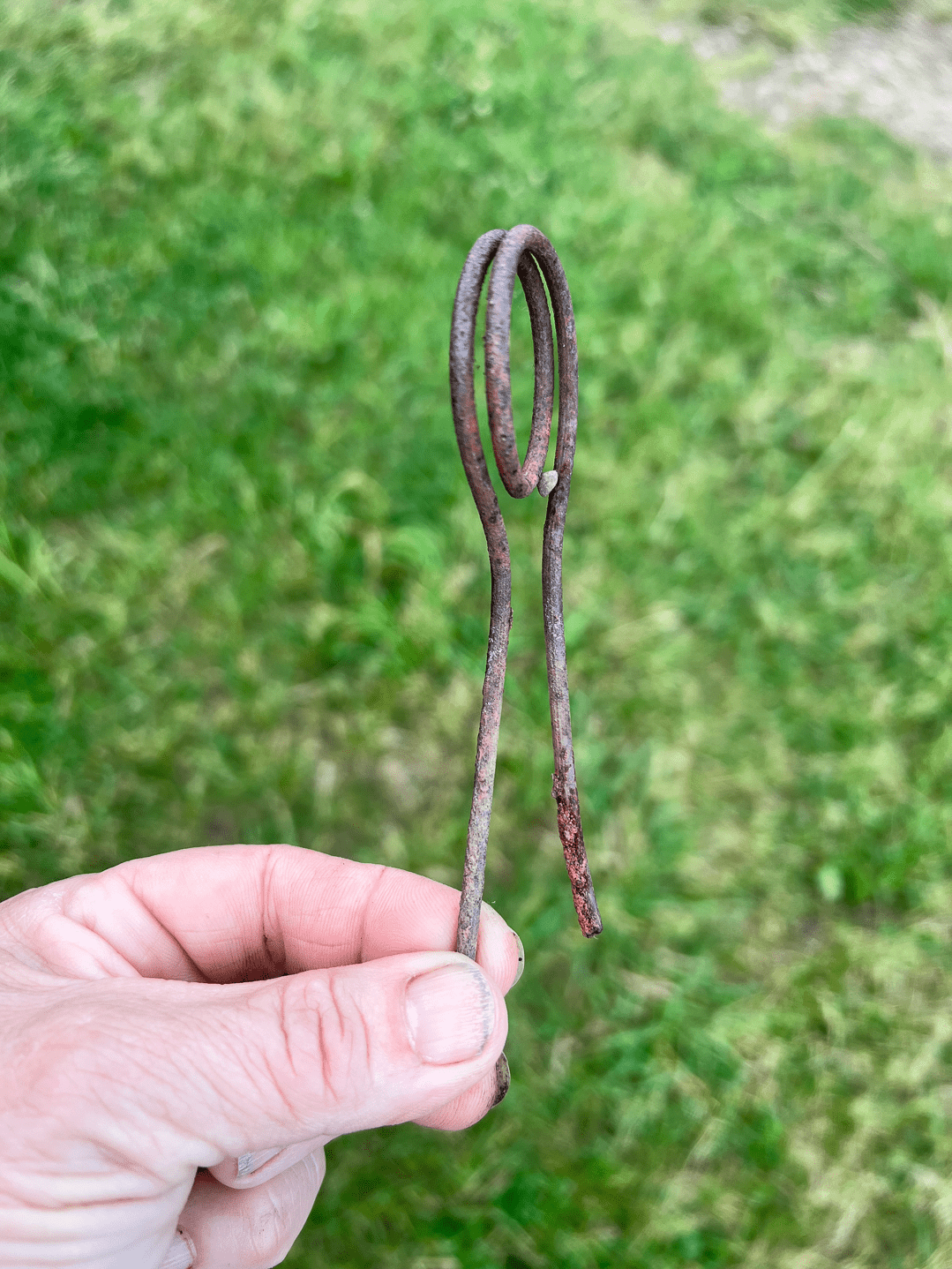
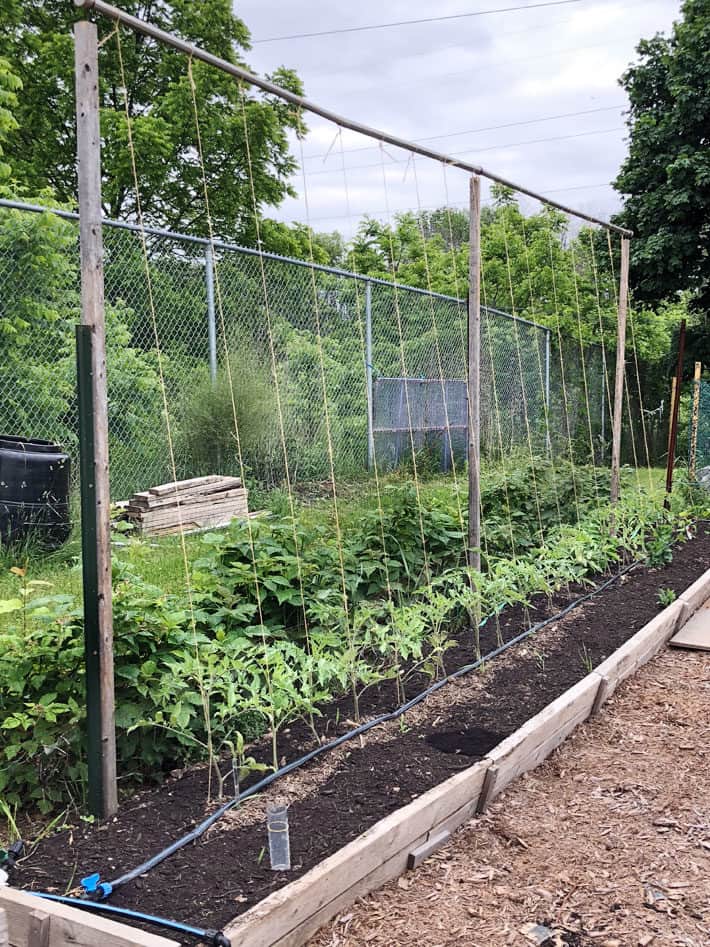
- Tie a thick cotton string every 12"- 18" so it hangs down towards the soil.
- Secure the string to the soil using a garden staple aka landscape staple.
- Remove the lower leaves to help prevent blight and any suckers that have formed. You can read more about how to identify suckers in this post here.
- Plant the tomatoes in front of the string. Plant them quite deep (up to the new first leaf on the plant).
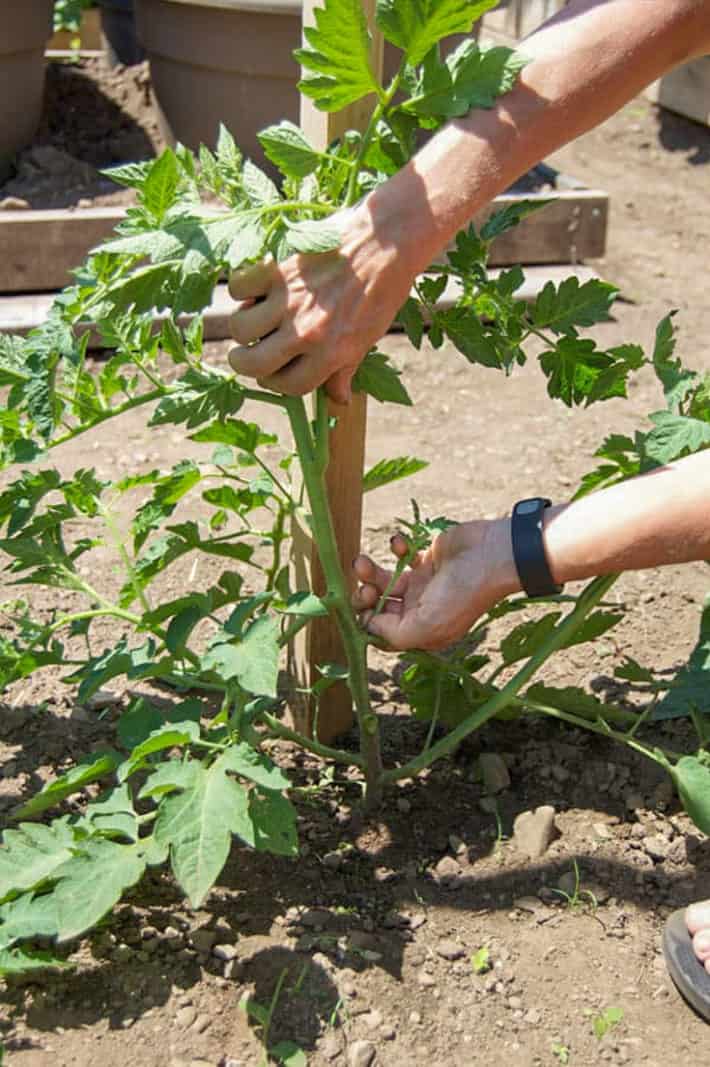
Removing a sucker. The shoot that grows between the main stem and leafy branch of tomatoes.
- Twirl your plants around the string once your tomato is around 12" high and is getting its first set of flowers.
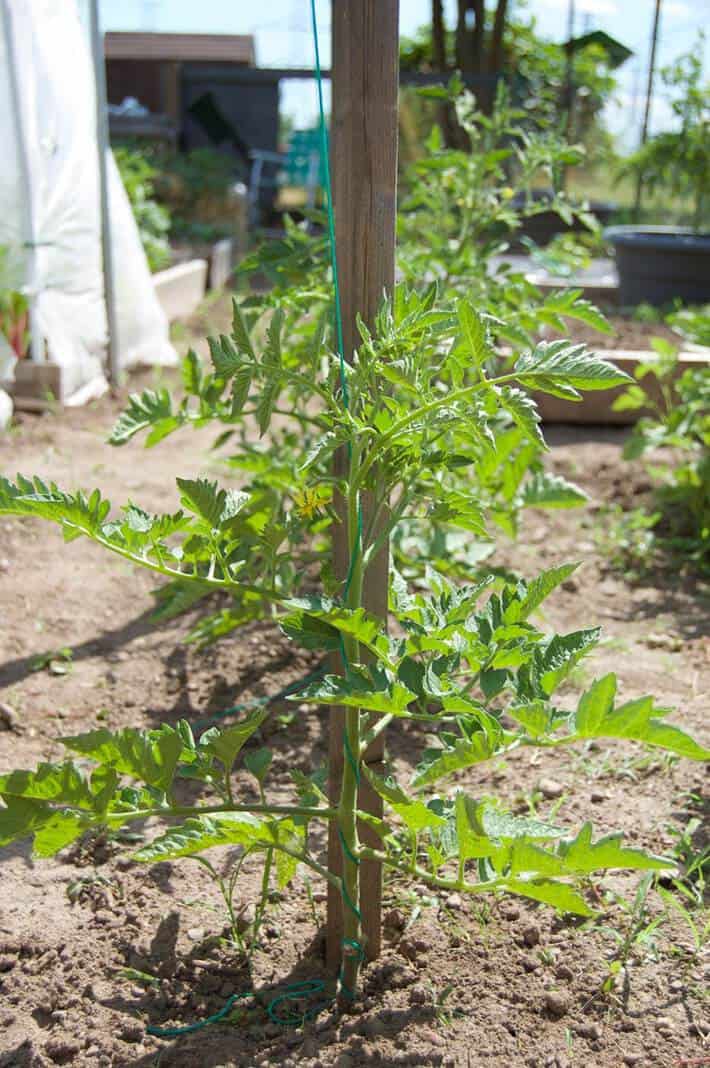
6. Continue to remove suckers and twirl once a week until the end of summer.
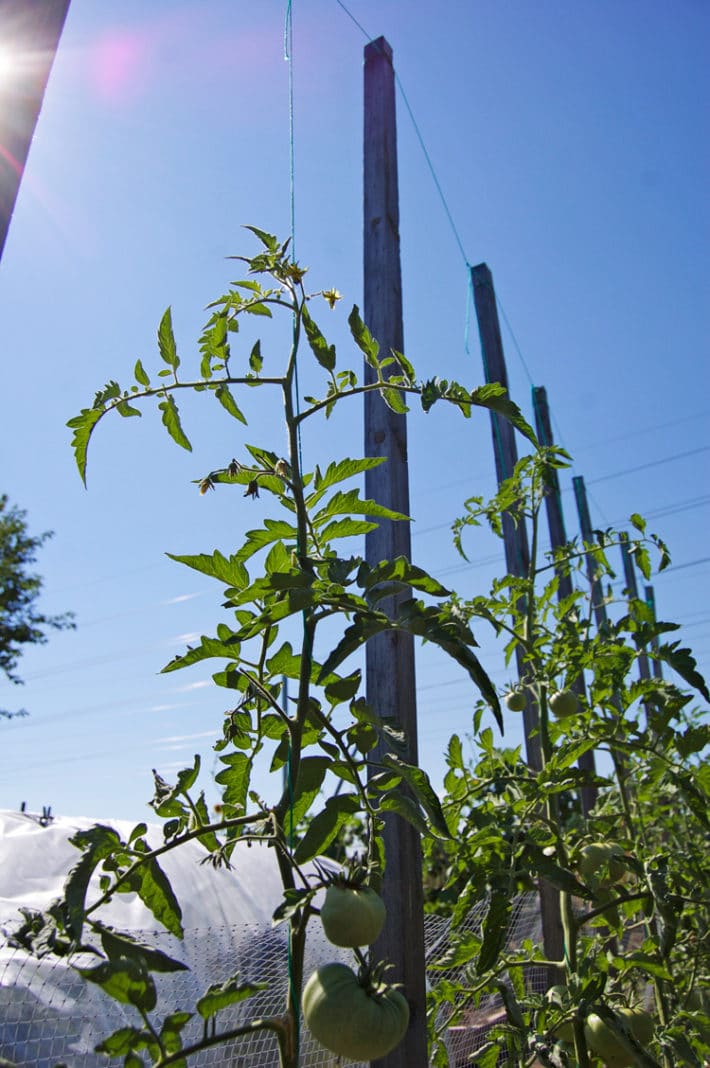
This shows the very first time I tried the method. I only had polyester string so that's what I used. It worked but disintegrated after only one season plus the thin string cut into the tomato stems. This can cause wounds for disease to enter.

The first year I tried this method, I worked with what I had, which was stakes that were already planted in the ground every 18". I just ran a string across the top of them all and hung my string down from that.
Pruning
For a string trellis to be effective you have to keep your tomatoes to 1 or 2 leaders. This is known as the French Method.
- A tomato grows with 1 stem - to begin with. Then as it grows the tomato will create other "leaders". Leaders are the suckers that grow between the main stem of the tomato and a leaf.
- If the sucker/leader is allowed to grow it creates a whole new strong stem for the tomato.
- String trained tomatoes can have 1 leader (the main stem) or 2 leaders (the main stem, plus letting 1 sucker grow into another leader).
- To grow 2 leaders, allow the first sucker that develops on your tomato plant to grow. It will become another stem.
- Each stem will need their own string to climb up with a minimum of 12" between each string.
- Using 2 leaders instead of one will produce more tomatoes but they'll be smaller.

The French Pruning Method.
No suckers, no extra leaders. Only one stem with leaves coming off of it. (except now I see a sucker to the top right of the plant, lol) Oops.
Tomato varieties that work best
Heirloom tomatoes work best with string training because they get TALL. Those are the types of tomatoes you want to grow up a string.
Heirloom tomatoes are known as "indeterminate" which means their height is not predetermined. They will keep getting taller and taller until the end of the season when they die. Indeterminate tomatoes often get to be 10' high.
There are also some hybrid tomatoes that are indeterminate, but for the most part hybrid varieties are "determinate" - meaning their height is predetermined and they won't get any taller than their predetermined height - usually about 5'.
Why String Training is Better Than Staking or Caging.
- Strings can be left up from season to season.
- You can fit more tomato plants into a smaller space.
- Plants can grow as high as 8' or more.
- Keeping plants at one leader gives much better air circulation around the plants which helps keep them disease free.
- String training can also be applied to growing beans or cucumbers
Wanna see how the string method worked with a single tomato plant flat against a fence? It would work flat against a house too. The string method on a single tomato plant makes it look similar to an apple espalier.
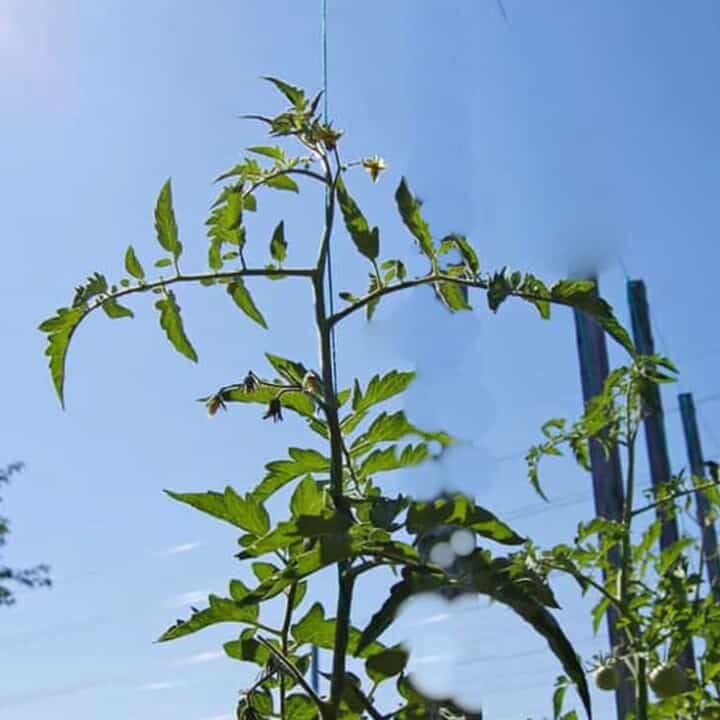
String Trellis - Printable Instructions
Whether you're new to gardening or not you're probably constantly searching for the best way to stake tomatoes. THIS is it.
Materials
- Heavy string
- 3, 8' stakes (2x2s work well)
- tomato plants
Instructions
- Run a wire, pipe or stake between two 8′ high stakes. You can also use string in a pinch.*
- Tie a string every 12″- 18″ so it hangs down towards the soil. Plant your tomatoes at every string so they are also 12″-18″ apart.
- Secure the string to the soil at the base of your tomato with a garden pin by winding the string around the pin and shoving it in the soil. You can also wrap the string several time around the base of the tomato plant to secure it. (I use pins now, I used to just wind it around the base of the plant)
- Remove any suckers that have formed. You can read more about how to identify suckers in this post here.
- Twirl your plants around the string once your tomato is around 12″ high and is getting its first set of flowers.
- Continue to remove suckers and twirl once a week until the end of summer.
Notes
- You can use any string but synthetic string that doesn't stretch is best. It will also last for years.
- Biodegradable string like jute or twine can also be used as long as it's thick enough not to degrade and fall apart during the growing season. It should be replaced every year.
- Never prune off more than 25% of foliage at one time.
- You can allow your tomato plant to have either one or two leaders.
- *to give extra support to your stakes hammer in a metal t post right next to each stake in the ground, then screw them together. Once your stake rots at soil level in a couple of years, it'll stay in place looking nice because of the t post.
Cotton clothesline works the best and lasts for years. ¼u0022, 7/32u0022 or 3/16u0022 are the best options. It will last for years. Thinner string or rope will degrade too quickly and break.
Nope. Garden staples do work the best but you can also just pull the string tight to the ground and wind the tomato stem around it.
By the end of the summer you'll have straight, tall tomatoes which get a lot of air circulation and a lot of sun. They'll be bald at the bottom and producing healthy tomatoes at the top.
Hypothetically of course.
Because this is gardening and all hell could break loose at any moment. A wild band of twirling goats or screaming aphids could come barreling through your garden destroying everything in its wake.
You just don't know.
→Follow me on Instagram where I often make a fool of myself←
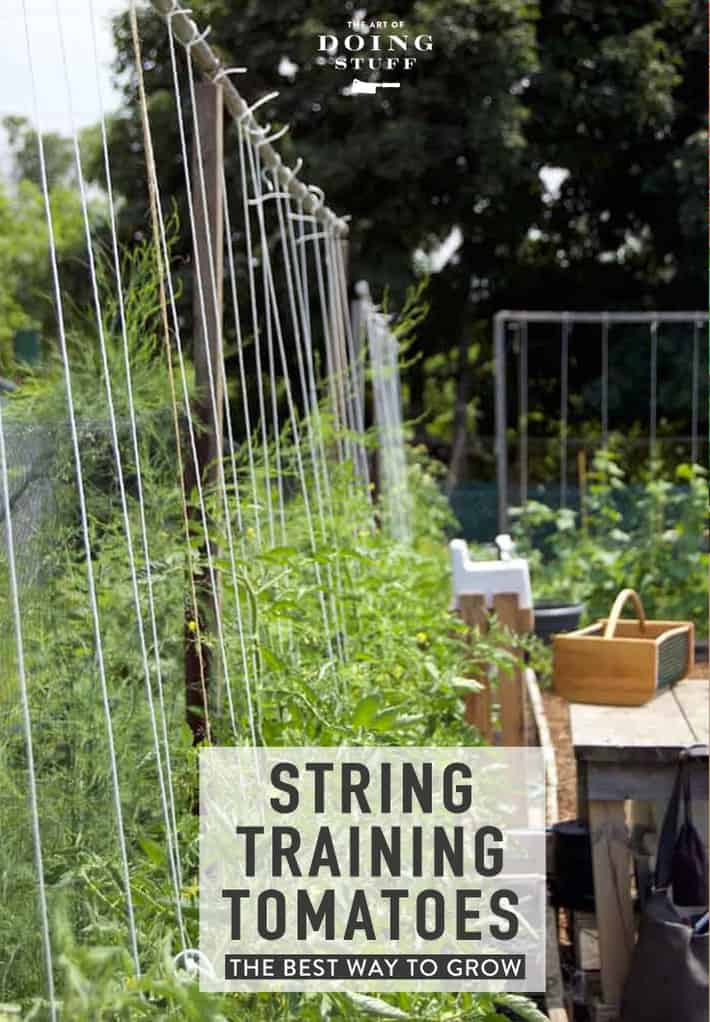


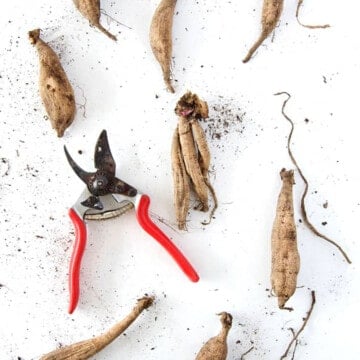
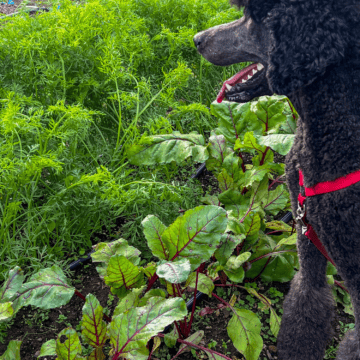

how do I know if i have determinant or indeterminate tomatos? i did not grow from seed. i only seem to murder those seedlings.... so i bought some
I bought my tomatoes in pots and the tag said whether they were determinate or indeterminate. I bought the indeteriminate ones this year and had tomatoes until frost.
Do you think this would work on other vine type "crops" like cucumbers, beans, peas, strawberries....?
I'm (hopefully) soon moving into an apartment that has really good sun and a teeny little space and want to pack as much growing in as I can.
Yes it works on cucumbers & other crops. Squash & pumpkins need to have slings to support the weight of each one. Check out a book or website called The Mittleider Gardening Method. That is where I first learned about stringing vegetables.
How far spart do you plant your seedlings when using this method?
Hi Victoria. Technically you can plant them as close to 1 foot apart using this method, but I already had my stakes set at 2' apart. :) ~ karen!
I'm ready to string my tomatoes....do you have a favourite type of string that u use?
Hi Joanna! Well, I like to use regular twine because it's easy to knot and grabs well but it does have a tendency to stretch a little bit. I don't like using nylon/synthetic twine because even though technically it will last a lot longer than natural twine it's slippery and harder to tie into tight knots. But either will work. ~ karen!
Thanks Karen...I'm using hemp
That'll be perfect Joanna! Less likely to rot than cotton. ~ karen!
So I'm a bit behind in reading this and haven't read all the comments yet but that's how I roll! Jump in both feet worry about the details late...any how. I have been growing my tomatoes this way a years. I set up two A frames with 6' grade stakes with a 4' stake across the top. The string (important that it's heavy or at least doubled-tomatoes are heavy!) then I do what I just learned is the French method of training the plants up the strings. Works great and tomatoes are easy to see (so are those nasty not so little horn worms if you get them-by the way the chickens love those horn worms!) I really enjoy reading your posts. Thank you!
I'm so jealous of your tomatoes. Every year, even while pregnant and even when I had no kitchen, I've somehow managed to do almost nothing and grow crazy tons of giant tomatoes. This year, I scaled back and only bought two tomato plants. This year I have a toddler. This year I have two 1-foot tall tomato twigs with two sad cherry tomatoes on them. Almost no leaves. No, I didn't water them enough. Did I put too much compost in the soil? I have no idea. Everything is dead. DEAD I tell you. Except for the weeds of fennel that grow wherever they damn well please and thank you. I don't even know how to get the fennel out of the ground to cook with it! Ugh. Yesterday my husband admitted to me that we both failed at summer. Failed. Here is to a future of summers full of growing actual tomatoes and doing all the other things I was hoping I could do. But toddler. Sigh.
That wobbly hammock under your arms? There's an actual medical acronym for that. It's known in professional circles as UADD. Under arm dingle dangle. So called by a flamboyant aerobics instructor. He had special arm motions to prevent the dreaded UADD and went on at great lengths about it. He was, as I said already, a professional aerobics instructor. Which means it's a professional acronym.
In the Uk these are called "Bingo wings". I really like this blog too. I am jealous of your guy who so casually produces perfect tomatoes, he must have his weak spots just like George Clooney. I grow wonderful rhubarb sweetcorn and globe artichokes. Luckily my wife understands me.
I have never heard of this method before. Its way to late for me to try it, my tomatoes are 6' high and taking over the world, but its something to think about for next year. Pruning out all the suckers seems like such a time commitment!
Hi Melissa! It wasn't a big deal at all the take out the original sucker and then all I have to do is go around once a week and check to see if any more are growing for the stem. Because the plant is so sparse with just one main stem it's incredibly easy to spot any of the suckers. Really is the neatest, easiest method EVER. ~ k!
I know you said you didn't, but I think you secretly know that guy in the photo and you're not telling us yet. Your clandestine tales of make-believe are probably all at least half true. Ssshhh, it'll be our secret. Wink.
I think I'll try the string method for next years garden. My potatoes did not do very well in the straw but the picture you took of the guy stringing up his tomatoes sure looked good!
String method is working out GREAT so far. Like GREAT. I do not think I will get a single potato from my straw potatoes! No joke! It's horrifying and I could cry! ~ karen
I've seen the strung- up method used at one of our local semi-urban organic farms... That farm is always innovating new ways of growing things, and that's what they do for tomatoes. And they are delicious right off the vine (u-pick Saturdays are awesome).
Good luck with your tomatoes. And your arms. ???
Yummy, home grown tomatoes. The best summer dinner is sandwiches made with home grown tomatoes on bread and butter, or maybe mayo.
I can't grow anything at all, but I've always wanted to try tomato trees like Disney World has. http://birdieguy.blogspot.com/2013/07/epcots-tomato-tree.html
Ya know, sometimes, you're a bit of a tease. I looked for the "see my tomato plants now on instagram." Notta.
But somewhat more painful... it's frigging JULY down here, Karen. My plants are already five and six feet tall.
In general, though, GREAT project. Will definitely be interested next summer.
What do you have for killing squirrels? I'm ready to borrow Hounds from Hell to get after them.
I’m glad you clarified that you don’t know the man in the photo. I could already hear the questions…
I tried the French method last year to grow my tomato plants, after deciding I just didn’t want the tangled top-heavy mess of tomato where the tomatoes grow and hornworms are feasting and you can’t see them through the mess. I used stakes instead of string, those 8’ green plant stakes from big box, and used twin to tie the plant at about 1’ intervals. It was pretty easy, and it worked very well. Lots of airflow, good visibility, and a good crop of tomatoes. My only problem was squirrels stealing my tomatoes! After waiting patiently for tomatoes to ripen, I would look out my window and see squirrels enjoying the fruits of my labor.
With the string method, is there any concern with the string getting too tight around the stem as the vine grows?
You just weave the stem around the string as the plant grows every couple of days. I have never had circulation problem...neither have my tomato plants!
I would love to do this method as well, however, I have no space for 8' poles. and how did you get them in the ground omgosh !.
Karen, you are toying with us.
Really...do you think we wouldn't know this is the guy with the beard you brought home from the antique market? You say you don't know him...humph..I believe she doest protest too much.
Enjoy, girlfriend!
.....Stringing the tomatoes, of course. ;-)
I have neighbors who have done this three years in a row and it's awesome.
Like Garth said, the bearded guy's style of trellis works great for pole beans too. We had to learn the hard way that in our windy location, any trellis must be well anchored!
This is my second year to use the French method on my hoop house tomatoes. Last year I didn't keep up with removing the suckers and it was a mess. My goal this year is to be merciless with the pruning. Yes, I've got some curled leaves too.
This is how my blog reading goes...
read blog, click on links to see if you are doing the florida weave (yes), see mention of canning tomato sauce, find tomato sauce recipe, print recipe....now I'm tired and I still need to can tomatoes.
Anyway, I agree with Gail. It is just too hot here in Oklahoma to get rid of too much foliage, but I love the idea.
Btw...once you get the arm waddle very few people can ever get rid of it.